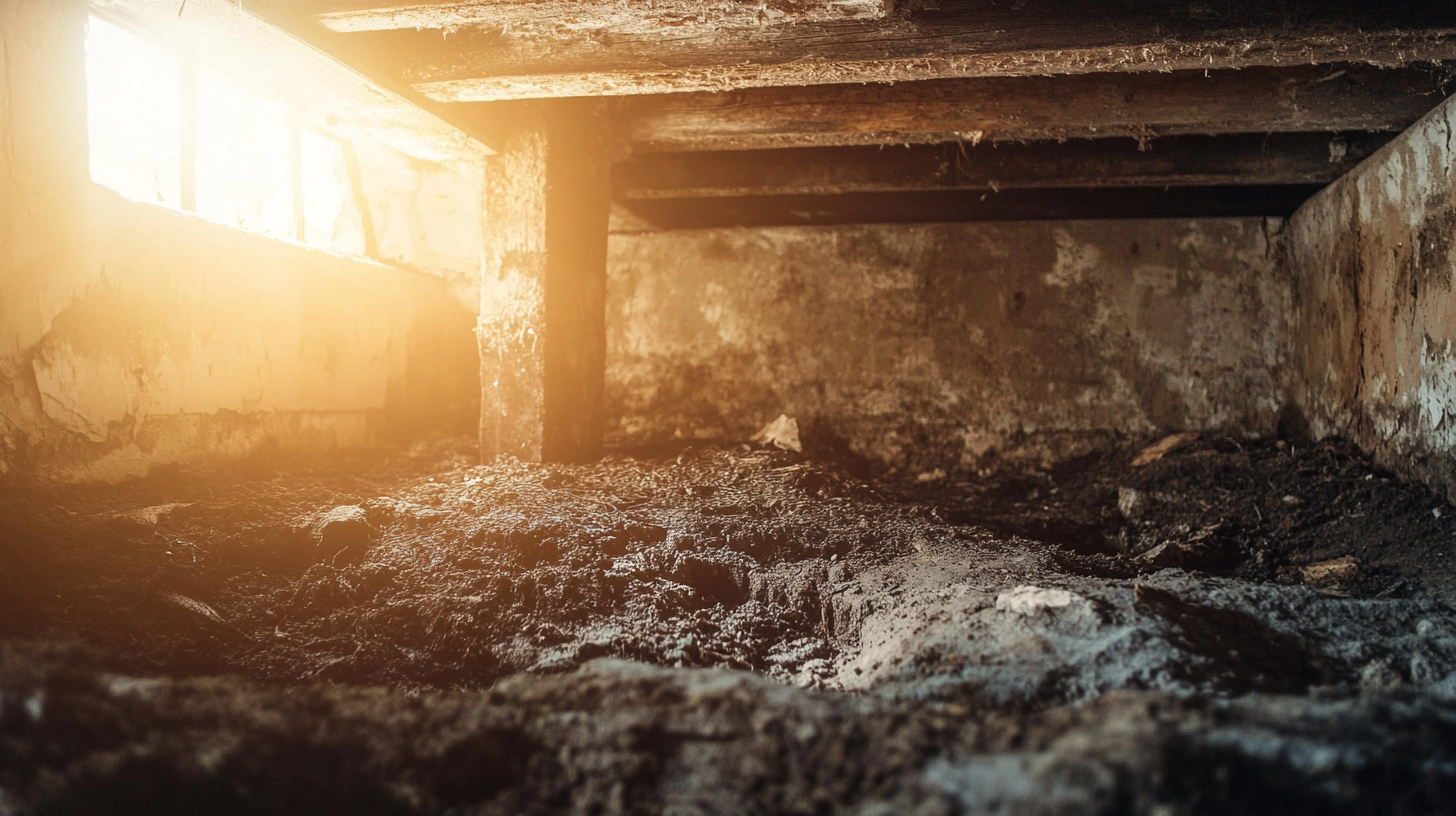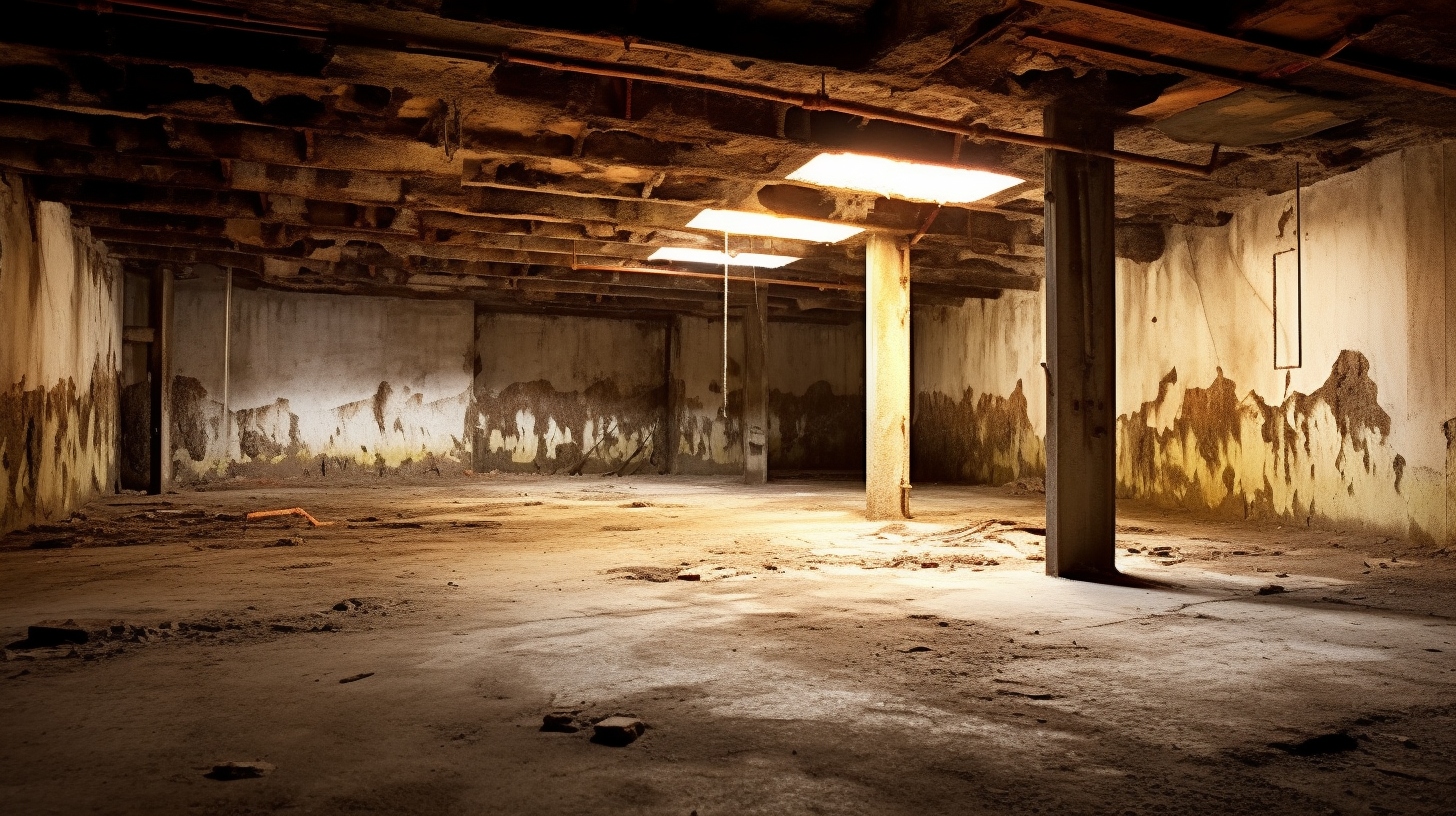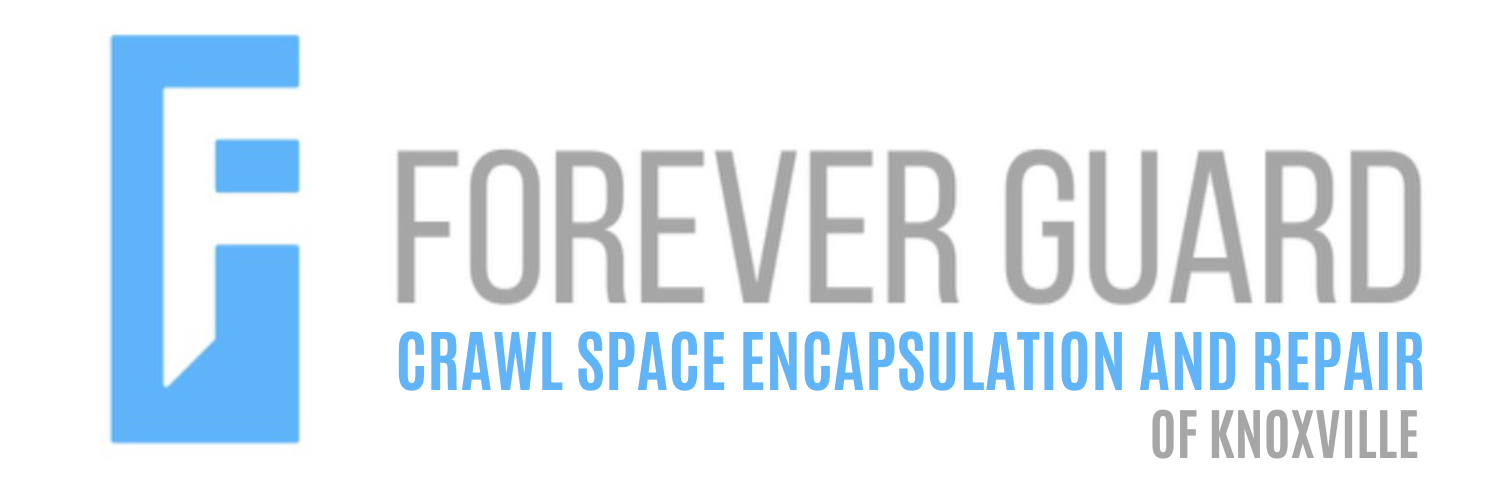Now IS THe Time To...

Crawl Space Services In Knoxville, TN
Stetson Howard: 865-432-6743
CRAWL SPACE ENCAPSULATION, REPAIR, WATERPROOFING & MOLD REMOVAL
No-Obligation, Free Inspections
No-Obligation Free Estimates
We Warranty All of Our Work
100% Satisfaction Guaranteed
In the unseen corners of basements and crawl spaces, sump pumps quietly stand guard, protecting our homes from the insidious threat of water damage. These vital components of home water management systems work tirelessly, often without much thought from homeowners—until they fail. Understanding the lifespan of your sump pump and recognizing the critical importance of timely replacement is essential for maintaining the safety and integrity of your home. This blog delves into the concept of sump pump lifespan, shedding light on how these devices work, the factors that influence their longevity, and the telltale signs that it's time for a replacement.
The lifespan of a sump pump is not infinite. Various factors, from the frequency of use to the quality of maintenance, play significant roles in determining how long your pump will effectively serve its purpose. Neglecting the need for timely replacement can lead to catastrophic failures, resulting in flooding, property damage, and the potential for mold and mildew growth. By understanding the typical lifespan of sump pumps and staying vigilant for signs of wear and tear, homeowners can take proactive steps to replace their pumps before they fail, ensuring continuous protection against water intrusion.
This blog aims to equip homeowners with the knowledge needed to make informed decisions about their sump pump systems. From selecting the right pump for your needs to recognizing when it's time for an upgrade, we'll cover the essential considerations for maintaining an efficient and reliable water management system. Join us as we explore the importance of sump pump lifespan and timely replacement, offering practical advice and insights to help you keep your home dry and protected for years to come.
Understanding the Lifespan of Sump Pumps
The sump pump, a silent sentinel in the fight against basement flooding, plays a crucial role in home water management. Yet, like all mechanical devices, it has a finite lifespan, influenced by a myriad of factors from usage frequency to maintenance practices. This section delves into the average lifespan of sump pumps, exploring the elements that contribute to their longevity and offering insights into how homeowners can maximize the service life of these essential devices.
Average Lifespan of Sump Pumps
Discussion on the Typical Lifespan of Sump Pumps and Factors That Influence It
The average lifespan of a sump pump ranges between 7 to 10 years, though this can vary significantly based on the pump's model, usage, and environmental conditions. Submersible pumps, which sit within the sump pit and are submerged in water, may have a slightly shorter lifespan compared to pedestal pumps, which are mounted above the pit and tend to stay dry. The material of the pump, frequency of operation, and the cleanliness of the water being pumped (clear vs. debris-filled) also play critical roles in determining how long a sump pump will effectively operate before needing replacement.
Factors Affecting Sump Pump Longevity
Overview of Factors Such as Usage Frequency, Maintenance, and Installation Quality That Impact Lifespan
Several key factors influence the longevity of sump pumps, including:
- Usage Frequency: Pumps in areas with high water tables or those in regions prone to heavy rainfall may work more frequently, potentially reducing their lifespan due to wear and tear.
- Maintenance Practices: Regular maintenance, such as cleaning the sump pit, checking the discharge line for blockages, and testing the pump's operation, can significantly extend a pump's service life.
- Installation Quality: Proper installation is crucial to ensure the pump operates within its intended parameters. Incorrect installation can lead to premature failure.
- Water Conditions: Pumps that frequently handle debris-filled water may experience more rapid wear on their components, reducing their lifespan.
- Power Supply Issues: Frequent power outages or reliance on an unstable power source can stress the pump's electrical components, affecting its longevity.
- Quality of the Pump: Higher-quality pumps with robust construction and designed for the specific demands of the environment they operate in tend to last longer than cheaper, lower-quality models.
The Risks of Postponing Sump Pump Replacement
In the diverse ecosystem of home safety and water management tools, sump pump alarms stand out for their critical role in preempting water damage by providing timely alerts. These alarms vary in complexity and functionality, catering to different needs and preferences. From basic water level alarms to sophisticated combination systems that monitor various potential issues, understanding the types of sump pump alarms available can help homeowners choose the best protection for their homes. This section explores the different types of sump pump alarms, detailing how they operate and the unique benefits they offer.
Water Level Alarms
Description of Alarms That Trigger Based on Water Levels and How They Operate
Water level alarms are designed to monitor the water level in the sump pit and alert homeowners when the water reaches a critical level, indicating a potential overflow or pump failure. These alarms typically use float switches or sensors to detect water levels. When the water rises to a predetermined height, the alarm is triggered, emitting an audible alert or sending a notification through a connected home system. This immediate notification allows homeowners to take swift action, such as checking the pump for malfunctions or activating a backup system, to prevent flooding.
Power Failure Alarms
Overview of Alarms Designed to Alert Homeowners of Power Outages Affecting the Sump Pump
Power failure alarms are essential for homes where sump pump operation is critical, especially during storms when the risk of power outages and flooding is higher. These alarms are equipped with battery backup systems that keep them operational even when the main power supply is cut off. Upon detecting a power failure, the alarm notifies homeowners through audible alerts or connected devices, allowing them to implement alternative measures, such as manual water removal or generator activation, to keep the sump pit from overflowing.
Combination Alarms
Information on Alarms That Combine Multiple Monitoring Features for Comprehensive Protection
Combination alarms offer the most comprehensive protection by integrating multiple monitoring functions into a single system. These advanced alarms can detect high water levels, power failures, and sometimes even the operational status of the sump pump itself. By providing a holistic view of the sump pump system's health and the environmental conditions affecting it, combination alarms enable homeowners to address not just immediate threats but also potential long-term issues. Connectivity features, such as Wi-Fi or home network integration, allow for remote monitoring and alerts, ensuring homeowners are informed and in control, regardless of their location.
Maximizing the Lifespan of Your New Sump Pump
Investing in a new sump pump is a significant step toward safeguarding your home from the perils of water damage. However, the journey doesn't end with installation. To ensure that your sump pump continues to operate efficiently and effectively over the years, regular maintenance and vigilant monitoring are essential. This section offers homeowners practical advice on routine maintenance tasks and strategies for early detection of potential issues, helping to extend the life of your sump pump and maintain its performance at peak levels.
Regular Maintenance Tips
Routine Maintenance Tasks That Can Extend the Life and Improve the Performance of Your Sump Pump
Maintaining your sump pump through regular care can significantly impact its longevity and reliability. Here are some key maintenance tasks to incorporate into your routine:
- Inspect and Clean the Sump Pit: Remove debris from the sump pit periodically to prevent clogging and ensure smooth operation. A clean pit allows the pump to work more efficiently.
- Test the Pump Regularly: Monthly testing by pouring a bucket of water into the pit can help ensure the pump activates as it should. This simple test can alert you to potential issues before they escalate.
- Check the Discharge Line: Ensure the discharge line is clear of obstructions and that water can flow freely away from your home. During winter, check for freezing, which can block the line and cause backups.
- Examine the Check Valve: The check valve prevents discharged water from flowing back into the pit. Inspect it for signs of wear or damage and replace it if necessary to maintain efficient pump operation.
- Battery Maintenance for Backup Pumps: If your sump pump has a battery backup, check the battery's charge status regularly and replace the battery according to the manufacturer's recommendations.
Monitoring and Early Detection
Strategies for Early Detection of Potential Issues to Prevent Major Malfunctions
Proactive monitoring can help you catch and address minor issues before they lead to significant malfunctions or complete pump failure:
- Listen for Unusual Noises: Strange noises coming from the pump can indicate internal problems. Grinding, rattling, or humming sounds may suggest issues with the motor or impeller.
- Monitor Performance During Heavy Rain: Pay attention to how your sump pump handles significant rainfall. Inadequate water removal or continuous cycling might indicate a problem.
- Install a Water Alarm: A water alarm placed near the sump pit can alert you to rising water levels, providing an early warning of pump failure or insufficient capacity.
- Keep an Eye on the Power Supply: Ensure your sump pump's electrical connections are secure and that the power source is reliable. For pumps with battery backups, regular testing can prevent surprises during power outages.
Preparing for Sump Pump Replacement
Replacing your sump pump is a crucial step in maintaining your home's defense against water damage. The key to a smooth replacement process is understanding when your current pump needs replacing and knowing how to choose the right new pump for your needs. This guide will walk you through assessing your current sump pump and selecting the best replacement.
Assessing Your Current Sump Pump
Regular assessment of your sump pump's condition and performance can help you determine the right time for a replacement, preventing potential failures that could lead to flooding. Here are some tips for evaluating your existing sump pump:
Performance Check: Notice how well your sump pump manages water discharge during heavy rains. A pump that struggles to keep up or activates too frequently may be nearing the end of its useful life.
Listen for Unusual Noises: Strange noises coming from your pump, such as grinding or rattling, can indicate internal problems that may require a replacement.
Inspect for Visible Wear and Tear: Check your sump pump for signs of rust, corrosion, or other physical damages. These can affect the pump's efficiency and are clear indicators that a replacement is needed.
Consider the Age: Most sump pumps have a lifespan of about 10 years. If yours is approaching or has surpassed this age, it's wise to consider a replacement to avoid unexpected failures.
Choosing the Right Replacement
Selecting a new sump pump that meets your home's specific needs is crucial for effective water management. Follow these guidelines to choose the right replacement:
Understand Your Needs: Evaluate the volume of water your sump pump needs to handle, especially during peak conditions. Consider the size of your basement or crawl space, the local water table, and historical rainfall patterns in your area.
Pump Type: There are several types of sump pumps, including submersible and pedestal models. Submersible pumps are quieter and typically more powerful, making them suitable for homes with significant water management needs. Pedestal pumps are more economical and easier to maintain, ideal for smaller volumes of water.
Power and Capacity: Choose a pump with the right horsepower for your needs. Higher horsepower pumps can move water more quickly but may be more expensive to operate. Ensure the pump has enough capacity (measured in gallons per minute) to handle the highest water inflow you expect.
Battery Backup: Consider a sump pump with a battery backup system, especially if your area is prone to power outages. A backup system can keep your pump running during storms when it's needed most.
Warranty and Support: Look for pumps with strong warranties and good customer support from the manufacturer. A longer warranty period can provide peace of mind, knowing that your investment is protected.
By carefully assessing your current sump pump and considering your specific needs when choosing a replacement, you can ensure your home remains protected against water damage. Remember, investing in a high-quality sump pump is an investment in your home's safety and your peace of mind.
Maximizing the Lifespan of Your New Sump Pump
Ensuring your sump pump remains in optimal condition is crucial for protecting your home from water damage. A well-maintained sump pump can serve your home efficiently for many years. This guide will share essential maintenance tips and monitoring strategies to help you maximize the lifespan and performance of your new sump pump.
Regular Maintenance Tips
Consistent maintenance is key to extending the life of your sump pump and ensuring it operates effectively. Here are some routine tasks you should perform:
- Clean the Sump Pit: Regularly remove debris from the sump pit to prevent clogging and ensure efficient water flow. A clean pit allows the pump to operate smoothly and prevents overheating.
- Test the Pump: Monthly, pour a bucket of water into the pit to trigger the pump. This test helps ensure the pump activates when needed and the water drains quickly once the pump is on.
- Check the Discharge Line: Ensure the discharge line is clear of obstructions and water flows freely away from your foundation. During winter, check for freezing, which can block the line and cause the pump to work harder or even fail.
- Inspect the Check Valve: The check valve prevents water from flowing back into the pit. Inspect it regularly to ensure it's functioning correctly, as a faulty valve can lead to unnecessary cycling and wear on the pump.
- Battery Maintenance for Backup Pumps: If your sump pump has a battery backup, check the battery's charge status and replace it according to the manufacturer's recommendations. A well-maintained backup system is crucial during power outages.
Monitoring and Early Detection
- Implementing strategies for early detection of potential issues can prevent major malfunctions and extend your pump's lifespan. Here are some effective monitoring strategies:
- Install a Water Alarm: A water alarm placed near the sump pit can alert you to rising water levels before they become problematic, allowing for early intervention.
- Regular Audits: Perform a comprehensive audit of your sump pump system bi-annually. Check for any signs of wear and tear, listen for unusual noises, and ensure all components are functioning as expected.
- Monitor Performance During Heavy Rains: Pay attention to how your sump pump handles significant rainfall. If it seems to struggle or activates more frequently than usual, it may be a sign that maintenance or a professional inspection is needed.
- Keep a Maintenance Log: Document each maintenance activity, including tests, cleanings, and repairs. A log helps track the pump's performance over time and can be valuable for troubleshooting future issues.
By following these regular maintenance tips and monitoring strategies, you can significantly enhance the efficiency and lifespan of your sump pump. Proactive care not only saves you money on potential repairs but also ensures your home remains safe from water damage.
FAQs
Recent Blog Posts
Crawl Space News







